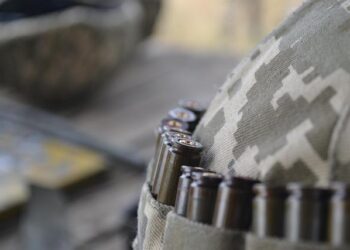Disturbing Proof Emerges of Deliberate Attacks on Ukrainian Soldiers Who Surrender
Intercepted Communications Reveal Coordinated Assaults on Ukrainian POWs
Recent analysis of intercepted radio messages, paired with drone footage, has uncovered troubling orders allegedly issued by Russian military leaders directing their forces to kill Ukrainian soldiers attempting to surrender. This investigation exposes a serious deterioration in wartime conduct, raising urgent ethical and legal questions amid the ongoing conflict in Ukraine.
The audio evidence attributed to Russian troops contains explicit commands targeting disarmed combatants‚ÄĒactions that violate international humanitarian laws such as the Geneva Conventions. The recurrence of these directives across multiple transmissions indicates a systematic approach rather than isolated incidents. Supporting this, drone recordings visually document attacks on soldiers clearly signaling surrender, intensifying global calls for accountability and justice.
- Explicit Orders: Commands aimed at eliminating surrendered personnel.
- Systematic Execution: Repeated patterns suggesting organized operational tactics.
- Legal Violations: Breaches of protections guaranteed under international law.
| Main Insights | Description |
|---|---|
| Content Analysis | Consistent instructions endorsing violence against prisoners-of-war. |
| Status Misuse | Surrendered fighters treated as hostile targets instead of protected captives. |
| Aerial Documentation | Drones capture real-time evidence corroborating intercepted orders. |
The Vital Contribution of Drone Technology in Uncovering War Crimes and Protecting Combatants
Drones have become essential assets in contemporary warfare‚ÄĒnot only providing strategic advantages but also serving as critical tools for documenting potential violations against combatants who are hors de combat (out of action). Equipped with ultra-high-definition cameras and sophisticated sensors, unmanned aerial vehicles (UAVs) offer continuous surveillance capabilities that can record unlawful acts committed during conflicts. For instance, recent deployments in Eastern Europe have demonstrated drones‚Äô ability to capture clear footage confirming breaches against surrendered soldiers.
This technology enhances transparency by delivering live video streams that validate intercepted communications indicating illegal commands. Beyond gathering evidence for legal proceedings, drones improve battlefield safety by detecting ambushes or threats early through thermal imaging and signal interception‚ÄĒcapabilities increasingly crucial given the intensification of hostilities across Ukraine‚Äôs frontlines.
- Evidentiary Importance: Capturing hostile actions for judicial review and historical documentation;
- Accountability Support: Providing verifiable data accessible to international watchdogs;
- < strong >Situational Awareness : Offering commanders real-time intelligence enabling informed tactical decisions;
- < strong >Troop Protection : Identifying imminent dangers promptly to safeguard personnel effectively;
| Drone Capabilities< /th > | Impact on Modern Conflict< /th > < /thead > |
|---|---|
A Global Imperative: Strengthening Protections for Surrendered Combatants Through International Cooperation
The alarming disclosures from intercepted communications combined with corroborative drone footage underscore an urgent need for reinforced global mechanisms dedicated to safeguarding humanitarian standards during armed conflicts. Existing frameworks like the Geneva Conventions require bolstered enforcement through independent monitoring bodies empowered to impartially investigate alleged violations within active war zones.
An effective strategy involves deploying neutral observers tasked with overseeing compliance related to prisoner-of-war treatment while promoting universal ratification and strict adherence to relevant treaties governing wartime conduct. Furthermore, multinational military training programs emphasizing respect for human rights can cultivate cultural shifts within armed forces susceptible to violating these norms under command pressure or operational stressors.
- Independent Monitoring Teams: On-site observers ensuring transparent reporting from conflict zones;
- Treaty Enforcement Initiatives: Encouraging nations’ commitment toward comprehensive implementation;
- Cohesive Training Programs: Collaborative efforts reinforcing lawful engagement principles among troops;
| Recommended Measures | Purpose & Goals |
|---|---|
Establish Accountability Frameworks | Form coalitions advocating adherence & sanction violators. /tr > |
Public Awareness Campaigns | Educate service members about rights upon surrender & consequences. /tr > |
















